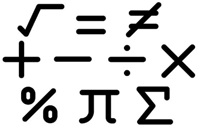

by Maurice Y. Michaud (he/him)
 Before I start explaining what the electoral quotient is, I need to define what a “quotient&rldquo; is in the first place. I’m pretty sure you aleady know what it is, but better for me not to assume anything. At worst, it will only bring back memories of your elementary school days.
Before I start explaining what the electoral quotient is, I need to define what a “quotient&rldquo; is in the first place. I’m pretty sure you aleady know what it is, but better for me not to assume anything. At worst, it will only bring back memories of your elementary school days.
The number we obtain when we divide one number by another is the quotient. It would be 2 in this equation:
It can thus be said that the electoral quotient gives us the average number of persons who are represented by a single seat. The EQ is then used as follows:
The federal Representation Act, 1985, was a major “reset moment” for the EQ in Canada. There were 282 seats in the House at that time, but to ensure that the territories would not lose their seats, their three seats were subtracted from 282, giving an S = 279. For its part, the P was defined as the population of the 10 provinces.
It would have been sensible to apply this calculation at each subsequent redistribution, based on how the 1985 application had increased the total number of seats to 295 (or 292 provincial seats), which wasn’t an excessive increase. However, that does not seem to have been the case — at least not in 2012 and 2022. The Fair Representation Act of 2011, which came into effect in time for the 2012 redistribution, resulted in the electoral quotient being decreased even though the population of the provinces had definitely increased. And for the 2022 redistribution, as explained at Elections Canada  , the “electoral quotient [was] obtained by multiplying the quotient of the last decennial redistribution (111,166) by the average of the population growth rates of the 10 provinces (9.647%) in the last 10 years. The new electoral quotient thus calculated [was] 121,891.”
, the “electoral quotient [was] obtained by multiplying the quotient of the last decennial redistribution (111,166) by the average of the population growth rates of the 10 provinces (9.647%) in the last 10 years. The new electoral quotient thus calculated [was] 121,891.”
I have a problem with that last federal recalculation, as an average introduces a significant distortion, but I’ll get into that separately. What matters to understand for now is that the electoral quotient is the first component of the more complex federal representation formula, and the single main driver in each province’s formula.